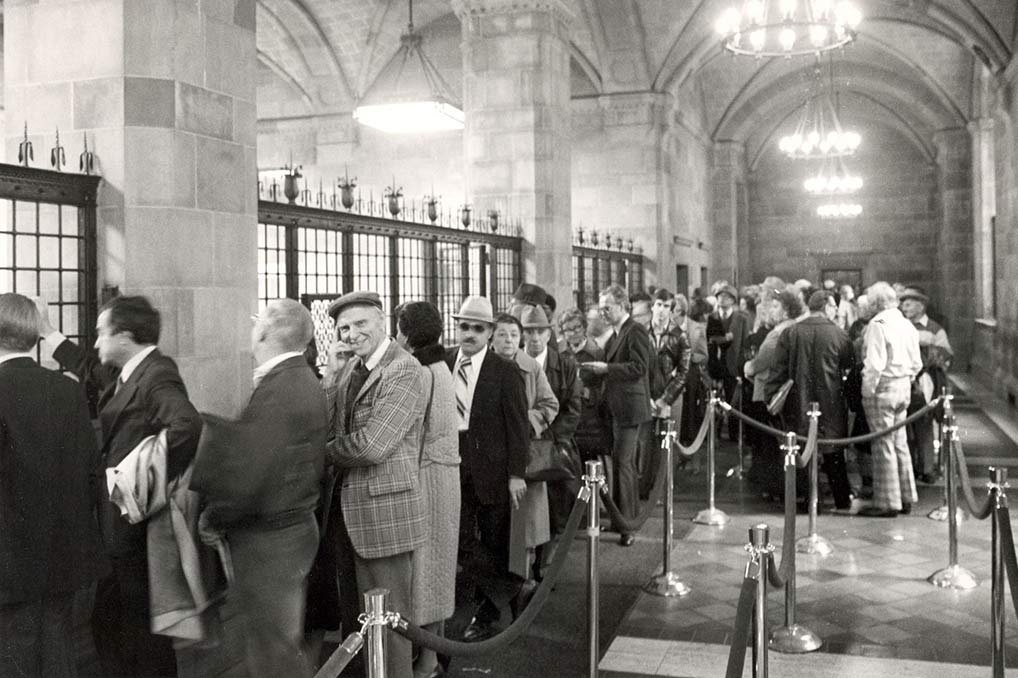In 1913, Congress passed the Federal Reserve Act, which created the Federal Reserve System. The purpose of the act was to improve the flow of money and credit throughout the United States. While the world has changed greatly in the century following the Federal Reserve Act, the Fed’s core mission of fostering an efficient banking system and healthy economy has remained unchanged.
1914: Humble Beginnings
After President Woodrow Wilson signed the Federal Reserve Act into law in 1913, the Federal Reserve System opened for business on November 16, 1914. The image below (Off-site) shows the newly formed Federal Reserve Board, Federal Reserve Bank governors and bankers.
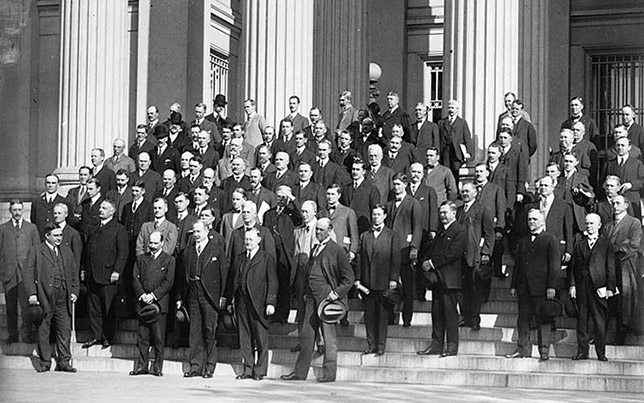
1915: Growing Demand for Faster Payments
Since 1915, the Fed has operated a wire payment system, now known as Fedwire® Services. In just three short years, the volume of communications became so great that the Federal Reserve leased a dedicated telegraph system to keep up with demand.
While the purpose of Fedwire Services has remained the same – to provide same-day payment transactions across the U.S. – the system’s technology has advanced throughout the years. The photos below depict Fedwire technologies (Off-site) used in the 1950s through the 1980s. From left to right: teletype punch tape, a dial-in terminal and FRCS-80 terminal.

1924: Manual Currency Inspection
While today’s high-speed currency processing machines allow for the automatic inspection of money at a rate of approximately 100,000 notes per hour, the process didn’t start off that way. Earlier versions of the Federal bill counter existed, but the Federal Reserve largely had to rely on employees to manually inspect and sort notes by hand, as shown in this image from 1924 (Off-site).
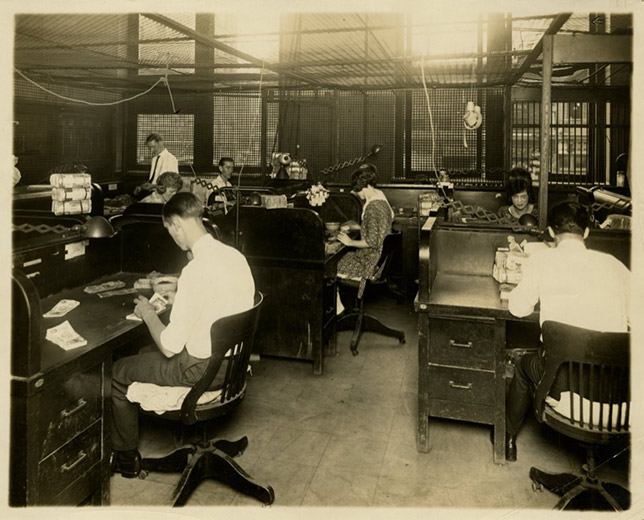
1929: More Secure Bills
Even though the Federal Reserve System doesn’t print currency, the banks manage the nation’s supply of currency. In 1929, the banks were tasked with updating the bills in circulation with a more secure option.
The new bills (Off-site) were smaller — the size and design still in use today — and printed on newly developed paper stock with higher folding endurance. The new design contained silk fibers, similar to the older bills, but the fibers were scattered randomly throughout the bills instead of in rows, making them harder to counterfeit.
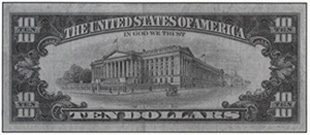
1949: Technological Advancements in Bond Redemption
The San Francisco Fed’s bond redemption department once used IBM keypunch machines, as shown in the image below (Off-site). The process was slow, since every bond required 37 punches.
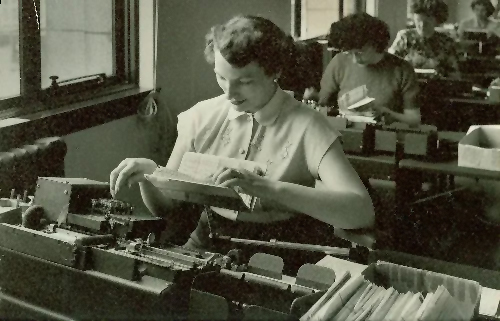
Since the 1940s, technological advancements have led to the digitalization of the bond redemption process. Redeemed paper savings bonds now are sent via image cash letters (ICLs) using the FedForward® Service. The current process increases availability, offers more flexible deposit options and greater access to customer support.
1953: Pre-Computer Communications
Before computers were widely used, the Markets Desk would continuously update chalkboards (Off-site) with the prices of outstanding U.S. government securities based on phone conversations with dealers. Today, the entire Markets (Off-site) operation is done by computer.
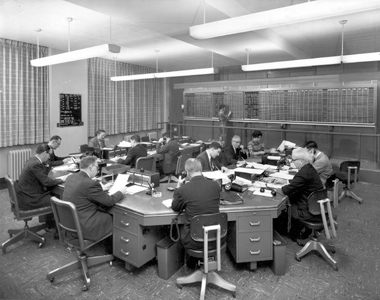
1966: Removing Unfit Currency
Currency can’t stay in circulation forever. In 1966, Congress amended the Federal Reserve Act to allow for the on-site destruction of Federal Reserve Notes to more efficiently remove unfit currency and save on transportation costs. At the time, the Reserve Banks built incinerators on-site, as pictured below (Off-site), or sought out other local options to make this process go smoothly.
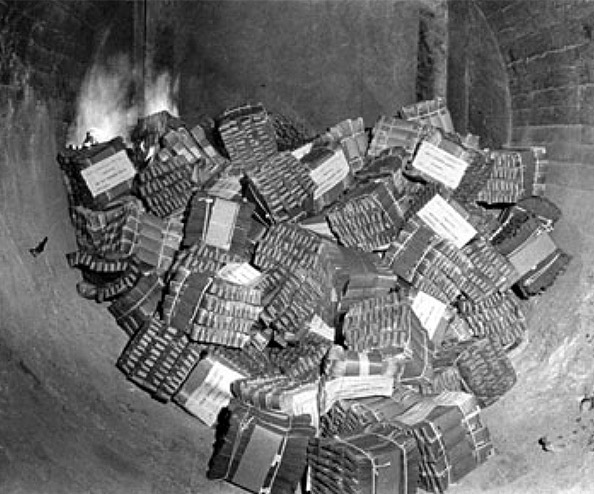
By the early 1980s, the Fed stopped incinerating bills. Instead, new sorting machines standardized the automatic shredding of unfit notes. Now, the shredded notes are used for compost cardboard, roofing material, insulation and more. You can even pick up a small package of shredded notes at some of the reserve banks as a souvenir.
1970: Treasury Auctions
Before information could easily be transferred electronically, a Treasury auction at the Bank would involve individuals waiting in line at the first-floor cages to purchases U.S. securities. Now, through digitalization, individuals are able to bid in the Treasury Auction through their bank, broker, dealer or a TreasuryDirect (Off-site) account.
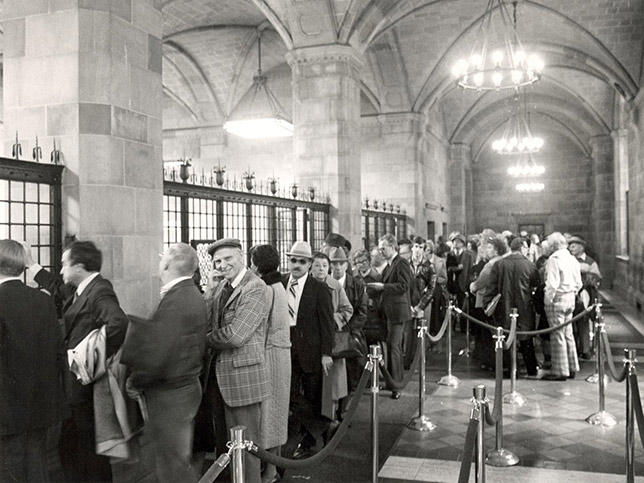
1992: Automation Abounds
The Federal Reserve Banks improved the process of delivering and retrieving cash trunks with the introduction of computerized robots (Off-site). The robots bring boxes of bills to a cage for counting by high-speed computers. Then, after verification, the robots pick up the cases again and deliver them to the vault.
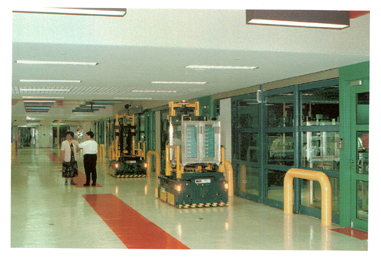
The Future of Payments
Since the signing of the Federal Reserve Act in 1913, the Fed has come a long way in advancing and improving the U.S. payment system. It continues to incorporate new technologies and launch new services that move the industry forward. FedACH® and the FedNow® Service have revolutionized payments and the FedCash® E-Manifest Service allows for more visibility into the cash supply chain.
As the central bank of the United States, the Fed is committed to collaborating with a wide array of stakeholders to enhance the speed, safety and efficiency of the U.S. payment system. To learn more about our ongoing efforts to advance the future of payments, visit FedPaymentsImprovement.org (Off-site).
